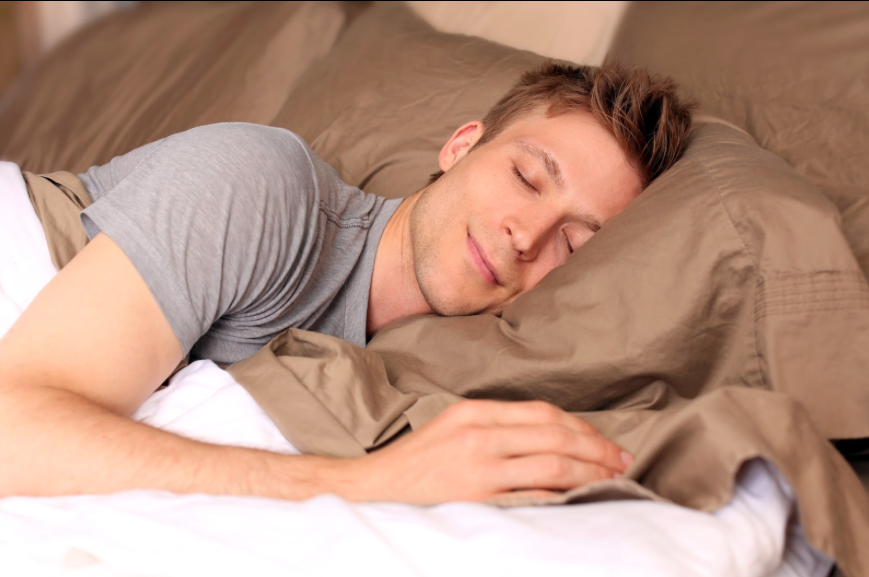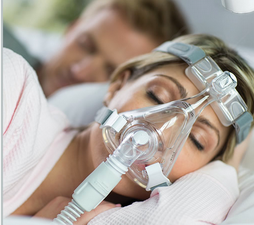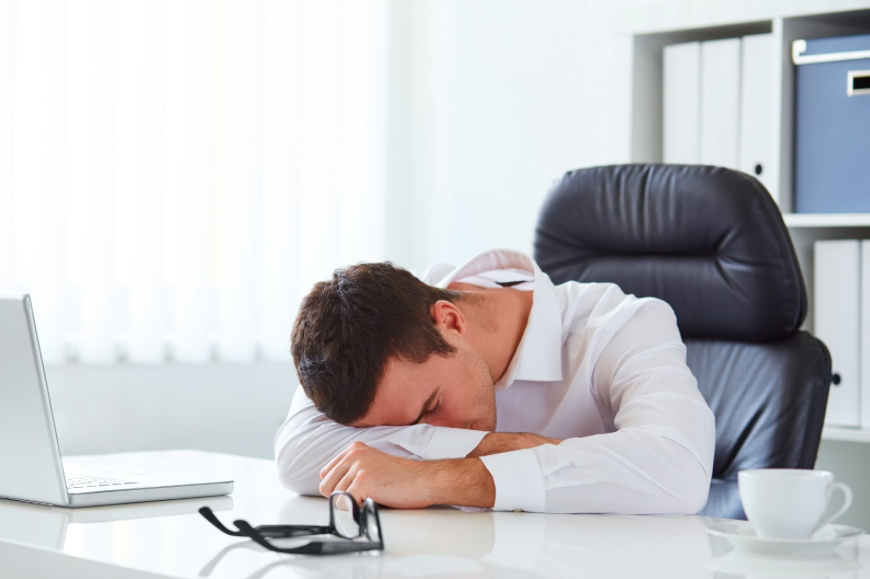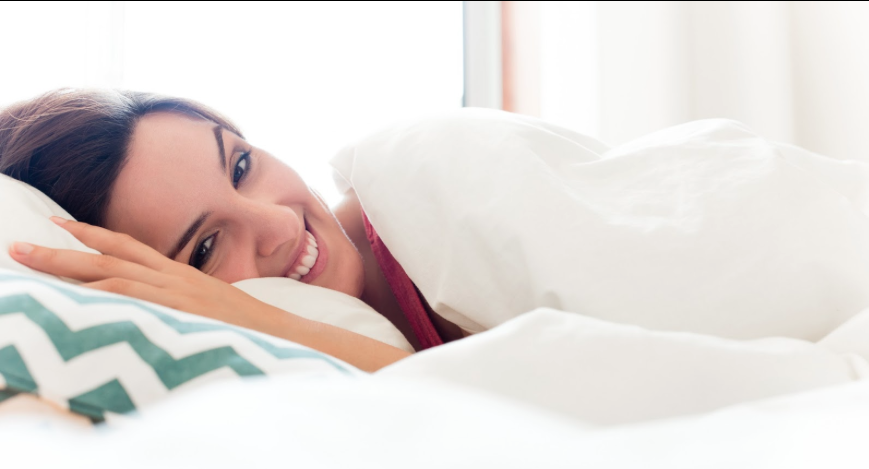 Sleep apnea is a treatable medical condition. There are self-help strategies and lifestyle modifications that can reduce sleep apnea. 1. Bedtime tips for preventing/reducing sleep apnea symptoms · Sleep on the side-Some patients snore or have sleep apnea when sleeping on their back. Patients can eliminate or reduce airway blockage simply by learning to sleep on their side. · Prop the head up-Elevate the head of the bed by 4 to 6 inches, or elevate the body from the waist up by using a foam wedge or use a special cervical pillow. · Open the nasal passages-Try to keep the nasal passages open at night using a nasal dilator, saline spray, breathing strips or a neti pot. 2. Alternative remedies for preventing/reducing sleep apnea symptoms · Singing can increase muscle control in the throat and soft palate, reducing snoring and sleep apnea caused by lax muscles. · Throat and tongue exercises may reduce the severity of sleep apnea symptoms by strengthening the muscles in the airway, making them less likely to close.
0 Comments
 Continuous Positive Airflow Pressure (CPAP) is the most common treatment for moderate to severe obstructive sleep apnea. A CPAP device is a mask-like machine that covers the nose and mouth, providing a constant stream of air that keeps the breathing passages open while sleeping. CPAP technology is constantly being updated and improved, and the new CPAP devices are lighter, quieter, and more comfortable. Here are some of the tips for choosing the right CPAP machine for you: · Make sure the CPAP device fits correctly-Straps should not be too tight or too loose and the mask should seal completely over the nose and mouth. · Ease into it-Start by using the CPAP device for short periods during the day. It is normal to need several months to get used to sleeping with the CPAP device. · Upgrade the CPAP device with customized options-Customize the mask, tubing and straps, to find the right fit. · Use a humidifier to decrease dryness and skin irritation. · Try a saline nasal spray for nasal congestion. · Keep the mask, tubing and headgear clean. · Mask the sound of the CPAP machine-Place it beneath the bed to reduce the noise. · Use an oral appliance in conjunction with the CPAP can assist in opening the airway. “Some patients still may not be able to tolerate a mask over the nose and mouth while they are sleeping,” says Dr. Lee. “If you are someone who still struggles, contact us. There may be an option that will work for you.” *CPAP treatment may cause side effects: dry or stuffy nose, irritated skin on the face, dry mouth, and headaches. If the CPAP device is not adjusted properly, patients may get stomach bloating and discomfort while wearing the mask. Oral appliances for the treatment of sleep apnea continue to increase in popularity for many sleep apnea sufferers. Over 100 different oral appliances are FDA approved for the treatment of sleep apnea. These appliances are worn in the mouth, just like a sports mouth guard or an orthodontic appliance while sleeping. Oral appliances hold the lower jaw forward just enough to keep the airway open and prevent the tongue and muscles in the upper airway from collapsing and blocking the airway. Two common oral appliances are the mandibular repositioning device and the tongue retaining device.
The American Academy of Sleep Medicine (AASM) has approved Oral Appliance Therapy (OAT) as the first line treatment for patients diagnosed with mild to moderate sleep apnea. The AASM also recommends oral appliances for patients with severe sleep apnea, who are unable to tolerate or cannot wear Continuous Positive Airway Pressure (CPAP) devices. Benefits of Oral Appliance Therapy: · Ease of use - Some patients prefer oral appliances because they can be easy to wear. For most patients it takes a few weeks to get used to sleeping with an oral appliance in their mouth. · Small and easy to transport for travel - unlike CPAP, oral appliances are small enough to fit in the purse or carry-on bag. *Oral Appliance Therapy may cause side effects: soreness of the mouth, saliva build-up, nausea, and damage or permanent change in position of the jaw, teeth and mouth.  Oral appliances for the treatment of sleep apnea continue to increase in popularity for many sleep apnea sufferers. Over 100 different oral appliances are FDA approved for the treatment of sleep apnea. These appliances are worn in the mouth, just like a sports mouth guard or an orthodontic appliance while sleeping. Oral appliances hold the lower jaw forward just enough to keep the airway open and prevent the tongue and muscles in the upper airway from collapsing and blocking the airway. Two common oral appliances are the mandibular repositioning device and the tongue retaining device. The American Academy of Sleep Medicine (AASM) has approved Oral Appliance Therapy (OAT) as the first line treatment for patients diagnosed with mild to moderate sleep apnea. The AASM also recommends oral appliances for patients with severe sleep apnea, who are unable to tolerate or cannot wear Continuous Positive Airway Pressure (CPAP) devices, or as additional help when using a CPAP device.  Sleep apnea can take over your life and turn it upside down. Dr. Anna Lee and her team are able to evaluate your needs and provide you with options in order to reduce the negative impact of your sleep apnea on your life. Individuals who struggle with sleep apnea can wake up hundreds of times a night in order to gasp for breath. Once they have the air they need, the body attempts to fall back to sleep only being woken a few minutes later gasping for another breath of air. This disruption in rem sleep can cause people to feel they are never getting the restful sleep needed to fully function at their best. There are multiple benefits of oral appliance therapy that can help to fix sleep apnea so you can rest easy. · Ease of use - Some patients prefer oral appliances because they can be easy to wear. For most patients it takes just a few short weeks to get used to sleeping with an oral appliance in their mouth. · Small and easy to transport for travel-Unlike CPAP, oral appliances are small enough to fit in the purse or carry-on bag. *Oral Appliance Therapy may cause side effects: soreness of the mouth, saliva build-up, nausea, and damage or permanent change in position of the jaw, teeth and mouth. For more information about sleep therapy and how dental device can help you, contact Dr. Anna Lee and her team today. |
Dr. Anna LeeGeneral and Family Dentist in Glendora, CA Archives
September 2017
Categories |
 RSS Feed
RSS Feed